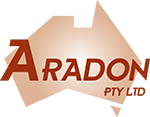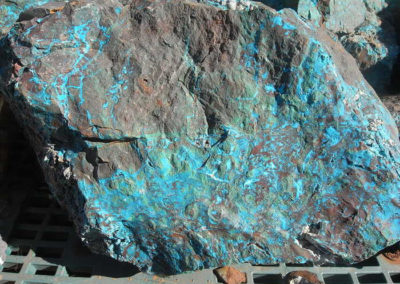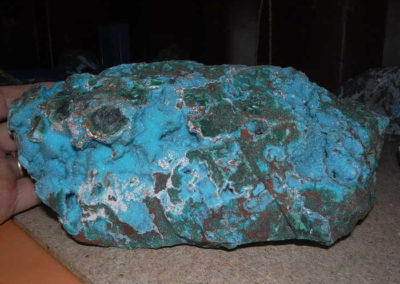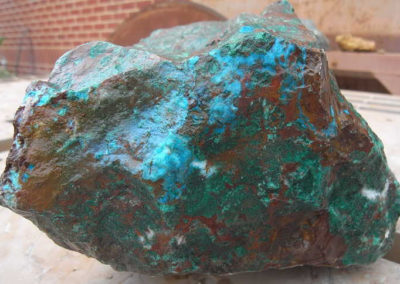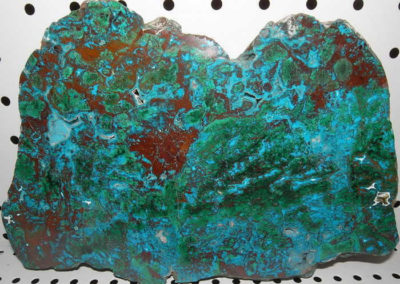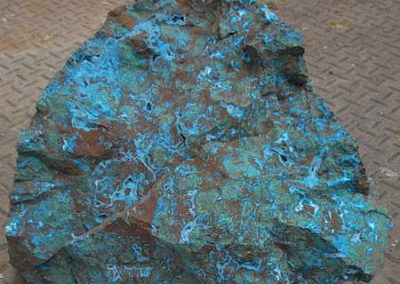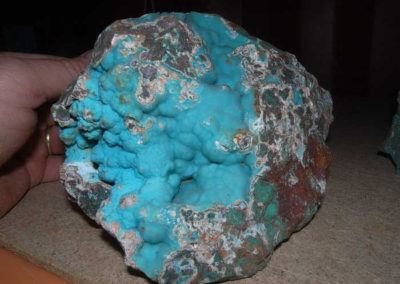Chrysocolla is a hydrated copper silicate and is a minor ore of copper. The stone is quite soft, with a hardness ranging from 2.5 to 3.5. Chrysocolla has a vibrant, blue-green colour and is often mistaken for Turquoise, another visually similar copper mineral. It is of secondary origin and is found in the oxidation zone of copper deposits, often encrusting or replacing earlier secondary minerals. Associated minerals include quartz, limonite, azurite, malachite, cuprite and other secondary copper minerals.
The name Chrysocolla was first used to describe the stone by Theophrastus, a Greek philosopher and botanist, in 315 B.C. The word was derived from the Greek words chrysos, meaning gold, and kolla, meaning glue, referring to the fact that Chrysocolla was employed from the earliest times by goldsmiths as an ingredient for solder.
Chrysocolla is typically found as botryoidal or rounded masses and crusts, or vein fillings. Occasionally, pieces of sufficient size and quality are recovered that enable the fashioning of highly desirable jewellery and ornamental pieces.
This opulent gemstone has inspired creativity in many artists, from ancient goldsmiths using it as solder, Renaissance painters grinding it as a pigment for their paints or modern jewellery designers incorporating it within their designs.
